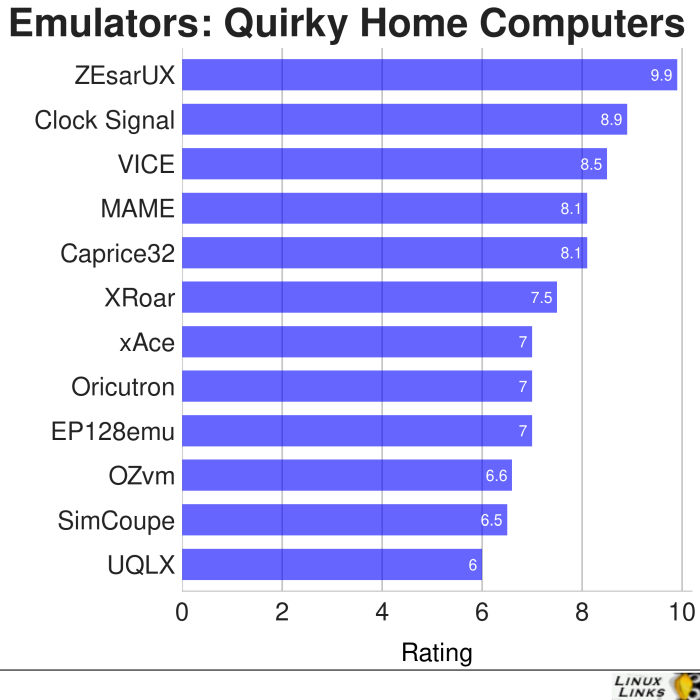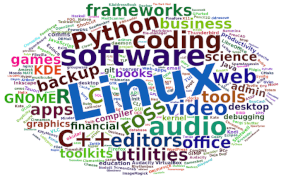Last Updated on February 12, 2019
Home computers were a class of personal computer which reached the market in the late 1970s, and became immensely popular in the following decade, selling many millions of units. The market was dominated for many years by a small number of 8-bit machines, in particular the Sinclair ZX Spectrum, Commodore 64, Amstrad CPC and Acorn BBC Micro. The class of computer was cheap to manufacture; the Commodore 64 manufacturing costs eventually reduced to a mere (from 5), the ZX Spectrum was significantly cheaper to produce by making use of cheap components and a minimalistic approach to design.
Many of the earlier machines (in particular the ZX Spectrum and Commodore 64) often ended up being very game oriented. However, the later home computers had more sophisticated hardware which widened their use in other areas. For example, the Atari ST was used professionally in music studios, in desktop publishing, and had a wide selection of office software available. However to many users it was still regarded as a games machine.
Just a few home computers dominated the 8-bit market. The Commodore 64 sold about 17 million units, the ZX Spectrum had over 24,000 software titles released, about 80% of British schools had a BBC microcomputer, and the Amstrad CPC sold about 3 million units. With the sheer number of units sold, it is easy to pick up a second hand machine so that you can relieve your misspent youth, or see what all the craze was about. There are also open source emulators available for these machines. However, there were so many other home computers released in the 1980s that, whilst not commercial successes, are just as intriguing, in particular because most of the generation did not experience what they had to offer. One of the most interesting home computers that flopped was the Enterprise, developed by Intelligent Software.
Enterprise’s slogan was “With Obsolescence Built Out”. Unfortunately, the machine shipped a lot later than anticipated, and by the time it finally came to market it had been outmuscled by the cheaper Amstrad CPC 464, even though the Enterprise’s specifications were far more impressive. Only 80,000 Enterprise machines were produced. The low sales volume means that it is extremely difficult to acquire a second hand machine, and they fetch high prices as collector’s items. So, an emulator is really the only way to experience the machine’s capabilities.
Of course, some of the commercial flops were with good reason. The Mattel Aquarius sold only about 20,000 units; it was underpowered and underspecified even for its release in 1983. Another extremely rare home computer is the Jupiter Ace. The fact that it stood out from the crowd by having a Forth interpreter instead of BASIC did not help. Its production run was limited to only 8,000 machines.
If you want to revisit the home computing scene of the 1980s, emulation is often the practical solution. The emulators featured in this article are free to download and released under an open source license. There are emulators here for the Enterprise, Oric, Jupiter Ace, Dragon, Commodore Plus/4, Cambridge Z88, SimCoupe, Sinclair QL, and more. Machines that never sold in real numbers, but still hold a certain fascination. The MAME emulator lets you experiment with lots of home computers.
To provide an insight into the quality of software that is available, we have compiled the following list of emulators. Hopefully, there will be something of interest for anyone who wishes to have some fun and reminisce about their misspent youth.
Here’s our rating for each emulator.

Now, let’s explore the 12 emulators at hand. For each title we have compiled its own portal page, a full description with an in-depth analysis of its features, screenshots, together with links to relevant resources.
| Emulators for Quirky Home Computers | |
|---|---|
| ZEsarUX | Emulates the Cambridge Z88, Sinclair QL and more |
| Clock Signal | Emulates a good range of home computers including Oric 1/Atmos |
| VICE | Commodore Plus/4 |
| MAME | Mattel Aquarius, Thomson MO5, Tatung Einsten, and many others |
| Caprice32 | Emulates the Amstrad CPC 8 bit home computer range |
| XRoar | Dragon 32, Dragon 64, Tano Dragon, Tandy CoCo 1/2 |
| xAce | The Jupiter Ace emulator |
| Oricutron | For the Oric series of computers, and the Pravetz 8D |
| EP128emu | Portable emulator of the Enterprise 64/128 |
| SimCoupe | Emulates the SAM Coupé |
| OZvm | Cambridge Z88, the iPad of the 1980s |
| UQLX | Sinclair QL |
 Read our complete collection of recommended free and open source software. Our curated compilation covers all categories of software. Read our complete collection of recommended free and open source software. Our curated compilation covers all categories of software. Spotted a useful open source Linux program not covered on our site? Please let us know by completing this form. The software collection forms part of our series of informative articles for Linux enthusiasts. There are hundreds of in-depth reviews, open source alternatives to proprietary software from large corporations like Google, Microsoft, Apple, Adobe, IBM, Cisco, Oracle, and Autodesk. There are also fun things to try, hardware, free programming books and tutorials, and much more. |

The Commodore Plus/4 and C16 sold well in European and Scandinavian markets when inventories were liquidated at prices that Jack Tramiel originally envisioned for the line.